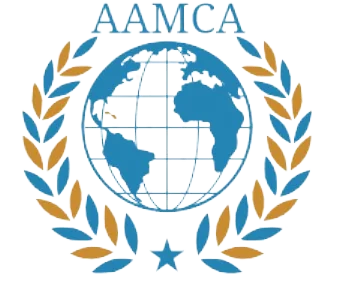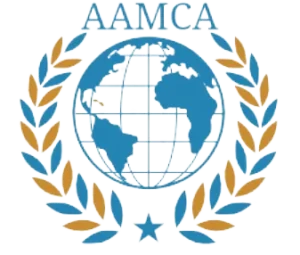Understanding the Significance of the Day
The International Day of Persons with Disabilities (IDPD) is observed annually on December 3rd, marking an essential occasion dedicated to promoting the rights and well-being of individuals with disabilities. Established by the United Nations in 1992, this day is rooted in the desire to foster an inclusive society and raise awareness regarding the challenges faced by persons with disabilities globally. The observance serves as a reminder of humanity’s collective responsibility to ensure that all individuals, regardless of their physical or mental abilities, can participate fully in societal activities.
The objectives of the IDPD focus on advocacy, empowerment, and the inclusion of persons with disabilities in various sectors, including education, employment, and healthcare. One of the significant achievements of this initiative is its role in catalyzing legislative frameworks and policies that support the rights of individuals living with disabilities. This day emphasizes the importance of not only recognizing disabilities but also understanding the diverse experiences and obstacles many face daily.
Crises Impacting Persons with Disabilities
Persons with disabilities often find themselves disproportionately affected by various crises, such as conflicts, climate disasters, poverty, and systemic inequalities. Each of these crises is characterized by unique challenges that exacerbate the existing vulnerabilities of individuals with disabilities. For instance, during armed conflicts, individuals with disabilities may face increased risks of violence, displacement, and loss of access to essential services, including healthcare and education. The physical and social environments in which they exist may become hostile, further impeding their safety and security.
Climate change poses another significant challenge, as natural disasters often result in environmental conditions that hinder the mobility and access to resources for persons with disabilities. The lack of inclusive disaster preparedness and response plans leads to the marginalization of these individuals. For example, emergency shelters may lack the necessary accommodations to ensure that persons with disabilities can safely evacuate and receive appropriate assistance during disasters. Consequently, they often endure greater difficulties and longer recovery times compared to their peers without disabilities.
Poverty is another systemic issue deeply intertwined with disability, as individuals with disabilities frequently encounter barriers to education and employment opportunities. The interplay of economic disadvantage and disability can lead to a cycle of poverty that is challenging to escape. Furthermore, societal inequalities reinforce stigmas and discrimination that limit the potential of persons with disabilities. The systemic barriers, such as inaccessible public spaces and services, further restrict their participation in society, effectively diminishing their chances for empowerment and inclusion.
In light of these challenges, there is a pressing need for inclusive policies that cater to the unique requirements of persons with disabilities. Addressing these crises and creating systems designed to empower individuals with disabilities is essential for fostering a more inclusive society. By understanding and addressing the complexities of these overlapping crises, we can work towards creating an environment where persons with disabilities are not only acknowledged but also actively supported in their pursuit of equality and respect.
The Role of Persons with Disabilities in Shaping Solutions
Individuals with disabilities possess unique perspectives and insights that are crucial for developing effective solutions to the complex crises faced by communities globally. Their lived experiences often inform innovative thinking, particularly in the realms of digital and assistive technologies. As society increasingly relies on technology to address various challenges, the contributions of persons with disabilities become essential. For instance, the development of screen readers and voice recognition software was significantly influenced by the input of individuals with visual and mobility impairments. Their active involvement has not only made these technologies more accessible but has also broadened the scope of innovation.
The participation of persons with disabilities in decision-making processes is vital for fostering an inclusive future. Evidence suggests that when individuals with disabilities are included in policy formulation and implementation, the outcomes are often more comprehensive and effective. They bring critical insights into the types of support and resources needed in times of crisis, such as health emergencies or natural disasters. For example, during the COVID-19 pandemic, persons with disabilities played a pivotal role in advocating for accessible health information and equitable access to healthcare services, ensuring their communities received the necessary support amidst the crisis.
Furthermore, recognizing the leadership potential of persons with disabilities is crucial. Many have emerged as innovators, entrepreneurs, and advocates for change, proving that their capabilities extend far beyond traditional expectations. Their leadership helps dismantle systemic barriers and empowers others within their communities. By embracing their involvement, organizations and governments can not only improve their approaches to crisis management but also foster a culture of inclusion and respect. Ultimately, the role of persons with disabilities in shaping solutions is integral to the creation of equitable and resilient societies that acknowledge and celebrate diversity.
Moving Forward: Commitments and Actions for Inclusion
The recent adoption of the ‘Pact for the Future’ marks a significant milestone in the global journey toward enhancing the lives of persons with disabilities. This comprehensive agreement underscored various commitments made by countries to establish inclusive frameworks within their societies. The Pact emphasizes the necessity for all nations to adopt policies that prioritize the rights and participation of individuals with disabilities. It is through these collaborative efforts that barriers can be dismantled, paving the way for a more equitable society.
As we look forward, the upcoming World Summit for Social Development stands as a pivotal platform for advancing these commitments. It aims to bring together an array of stakeholders, including governments, civil society organizations, and community representatives, to engage in dialogue and share best practices concerning disability inclusion. This summit will serve not only as a forum for discussing strategies but also as a launchpad for innovation in the support systems necessary for individuals with disabilities. By fostering partnerships and collaboration, targeted actions can be established to ensure that the objectives laid out in the Pact for the Future are realized.
Moreover, it is essential to cultivate a culture of ongoing advocacy beyond the observance of the International Day of Persons with Disabilities. Sustained efforts are critical to maintaining momentum, ensuring that the voices of those affected by disabilities are not only heard but also respected. By actively engaging various stakeholders at all levels, the movement toward a truly inclusive society can gain traction. The commitment to this cause extends beyond policy adoption; it requires continuous dedication to visible change, empowerment, and support. In conclusion, both the Pact for the Future and the World Summit for Social Development symbolize a commitment to foster a society where every individual, regardless of their abilities, can thrive and participate fully. Collaboration remains the cornerstone of achieving this vision.




